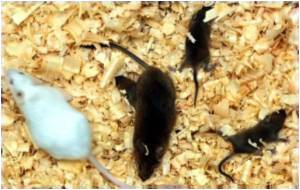
‘The presence of SWAT team of immune cells may be responsible for the surprisingly low infection rates following cleft lip and palate surgery.’
Tweet it Now
"ILCs are newly discovered as one of our immune cells, but they are
really old. We had just missed them," said Dr. Babak Baban, immunologist
in the Department of Oral Biology at The Dental College of Georgia and
in the Department of Surgery at the Medical College of Georgia at
Augusta University. "Their presence helps explain why we don't have more surgical site infections than we do," said Dr. Jack Yu, chief of pediatric plastic surgery at MCG and director of the Craniofacial Center at CHOG.
Scientists began to report about ILCs in 2008 and 2009 and their ability to defend against infection and aid wound healing. Like our natural killer cells, they are essentially born ready for action. Other, so-called adaptive immune cell types need to be educated on what to attack, typically by exposure to it, and develop receptors and a memory for these so-called antigens, said Baban, the study's corresponding author.
The need for education leaves babies with immature adaptive immune systems for their first few months of life, said Baban, which is when levels of ILCs appear highest. While present throughout life, it's early on that ILCs appear particularly vital: "When you knock these guys out, you are dead," Yu said of attempts to create animal models in which the fast-reacting cells had been removed. Conversely, levels seem to drop with age, possibly as adaptive immune cells mature and take on some of their responsibility, Baban said.
Yu has been doing cleft lip and palate repair nearly 25 years, and he and Baban decided to team up to explore the surprisingly low rates of surgical site infection considering the amount of bacteria found in even the cleanest, healthiest mouth. While the bacteria count would support infection rates more like 5-7%, rates today are under 1%, said Yu, a study coauthor.
Advertisement
While they were the first to document ILCs in the mouth, the researchers weren't really surprised to find the cells there. Shortly after birth, fast-acting ILCs appear to populate babies, particularly concentrating on the alimentary canal, which is the path that food follows and where their maturing immune system is housed, said Baban.
Advertisement
The researchers' current and future studies include comparing cell numbers in young and older healthy mice. Baban also is looking at the potential role of these cells in a range of diseases from gum disease to melanoma and traumatic brain injury with the long-term goal of giving patients doses of these cells to better combat their disease. This will include identifying which ILCs naturally fight which infection and/or disease. A dose of these cells may even one day replace an antibiotic before surgery and help combat the epidemic of antibiotic resistance, Baban said.
Unlike manmade antibiotics, ILCs continue to recognize a bacterium, for example, that morphs to escape the drug's attention. "Our antibiotics are no good after two years. These cells have been around billions of years and still are," Yu said.
The babies whose tissue was examined were an average of 6 months old and had routine reconstructive surgery of their cleft lips. Five of the babies also had a cleft palate that was later repaired. The researchers immediately put the lip and mucosal tissue removed as part of the cleft lip repair into a saline solution and took it to the lab for examination.
Cleft lip and palate are the most common birth anomaly and occur in about 1 in 700 births. Babies essentially have holes in these areas where either formation was incomplete or tenuous and broke apart, Yu said. Known risks include the mom smoking or drinking during pregnancy and taking certain drugs, including anticonvulsants and some acne drugs.
Other surgeries classified as clean-contaminated include oral, vaginal and anal procedures. Reported infection rates for this classification of surgery average about 4%, although prophylactic antibiotics can cut that rate in half, the researchers write. Hand surgery is an example of an inherently clean surgery.
Depending on their severity, the birth defects can cause a range of dysfunction, including trouble eating, drinking and speaking as well as aesthetic concerns and related psychological problems. Yu, who is editor of the Cleft Palate-Craniofacial Journal, generally considers age four months an optimal time for surgical repair.
Source-Eurekalert













